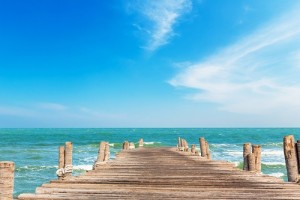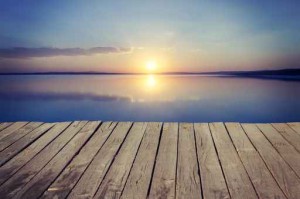Contributor: Dr. Gregory Jantz, founder of The Center • A Place of HOPE
 Spring break is a longstanding tradition among college students around the country. This weeklong event lures a pilgrimage of 18-24 year olds to beaches, ski trips and tropical destinations.
Spring break is a longstanding tradition among college students around the country. This weeklong event lures a pilgrimage of 18-24 year olds to beaches, ski trips and tropical destinations.
While this break in theory offers a reprieve from the pressures of coursework and studying, the focus of spring break is often less about “rest and relaxation” and more about partying, and more specifically binge drinking.
Binge drinking is defined as a male consuming five or more drinks within two hours, and a woman consuming four or more drinks within two hours. This excessive drinking behavior is common among approximately 50 percent of college students during their four years at school.
Binge Drinking Gets Worse During Spring Break
During spring break, more students drink, and this percentage of binge drinkers jumps even higher. One study by the American College of Health found that the average male reported drinking 18 drinks per day while on spring break, and the average female reported drinking up to 10 drinks per day.
It’s estimated that during spring break, approximately:
- 42 percent of students get drunk at least once
- 11 percent of students “blackout” or pass out due to drinking
- 32 percent experience hangovers
- 2 percent get into trouble with the police
Both Binge Drinkers and Casual Drinkers Are Susceptible
 The students that are most susceptible to extreme binge drinking behaviors during spring break are those that have a history of binge drinking during the school year. However, the students who typically drink less during the normal school year are more likely to experience negative consequences when binge drinking during spring break, seemingly because they are not as experienced with the excessive drinking behavior.
The students that are most susceptible to extreme binge drinking behaviors during spring break are those that have a history of binge drinking during the school year. However, the students who typically drink less during the normal school year are more likely to experience negative consequences when binge drinking during spring break, seemingly because they are not as experienced with the excessive drinking behavior.
In both cases, students are more likely to experience major alcohol-related consequences during spring break if they have the intention of getting drunk prior to even leaving for their spring break trip.
These binge-drinking spring breakers are frequently without any type of sober or adult supervision. They are also oftentimes in a foreign country (like Mexico or the Dominican Republic) where there is little support infrastructure to assist in cases of emergency. This combination of scenarios can result in dangerous and sometime fatal outcomes.
Consequences of Binge Drinking
Binge drinking can have serious and negative physical, legal, and social impacts. Below are statistics about common consequences of binge drinking published by The National Institute on Alcohol Abuse and Alcoholism.
- Death: It’s estimated that approximately 1,800 college students between the ages of 18 and 24 die each year from alcohol- related unintentional injuries, including motor-vehicle crashes.
- Injury: An estimated 599,000 students between the ages of 18 and 24 are unintentionally injured each year under the influence of alcohol.

- Physical Assault: Approximately 646,000 students between the ages of 18 and 24 are assaulted each year by another student who has been drinking.
- Sexual Assault: Perhaps greater than 97,000 students between the ages of 18 and 24 are victims of alcohol-related sexual assault or date rape each year.
- Unsafe Sex: An estimated 400,000 students between the ages of 18 and 24 had unprotected sex, and nearly 110,000 students between the ages of 18 and 24 report having been too intoxicated to know if they consented to having sex.
- Health Problems: More than 150,000 students develop an alcohol-related health problem each year.
- Suicide Attempts: Between 1.2 and 1.5 percent of college students indicate that they tried to commit suicide within the past year as a result of drinking or drug use.
- Drunk Driving: Roughly 2.7 million college students between the ages of 18 and 24 drive under the influence of alcohol each year.
- Memory Loss: National estimates suggest that 10 percent of non–binge drinkers, 27 percent of occasional binge drinkers, and 54 percent of frequent binge drinkers reported at least one incident in the past year of blacking out, defined as having forgotten where they were or what they did while drinking.
- Property Damage: More than 25 percent of administrators from schools with relatively low drinking levels and more than 50 percent from schools with high drinking levels say their campuses have a “moderate” or “major” problem with alcohol-related property damage.

- Police Involvement: Approximately 5 percent of 4-year college students are involved with the police or campus security as a result of their drinking (Wechsler et al. 2002), and an estimated 110,000 students between the ages of 18 and 24 are arrested for an alcohol-related violation such as public drunkenness or driving under the influence. A more recent national study reported that 8.5 percent of students were arrested or had other trouble with the police because of drinking.
- Alcohol Abuse and Dependence: Roughly 20 percent of college students meet the criteria for an alcohol use disorder in a given year (8 percent alcohol abuse, 13 percent alcohol dependence).
Conclusion
Binge drinking is a serious and sometimes fatal activity that spikes during college spring break trips. For many students, there is a tradition and even an expectation for binge drinking behavior during these trips. Consequently, there are both more students that binge drink during these trips than typical, and also an increased severity of binge drinking.
In order to avoid an increased likelihood of negative, alcohol-related consequences during these spring break trips, it’s important for this issue to be addressed, especially before the trips are planned, and expectations are misplaced.
About the Author:
Authored by Dr. Gregory Jantz, founder of The Center • A Place of HOPE and author of 28 books. Pioneering whole-person care nearly 30 years ago, Dr. Jantz has dedicated his life’s work to creating possibilities for others, and helping people change their lives for good.
The Center • A Place of HOPE, located on the Puget Sound in Edmonds, Washington creates individualized programs to treat behavioral and mental health issues, including eating disorders, addiction, depression, anxiety and others.
Community Discussion – Share your thoughts here!
What types of healthy Spring Break activities are you enjoying in your recovery?
Sources:
- http://www.forbes.com/sites/robertglatter/2014/03/11/spring-breaks-greatest-danger/
- http://pubs.niaaa.nih.gov/publications/arcr352/201-218.htm
The opinions and views of our guest contributors are shared to provide a broad perspective of addiction. These are not necessarily the views of Addiction Hope, but an effort to offer discussion of various issues by different concerned individuals.
Last Updated & Reviewed By: Jacquelyn Ekern, MS, LPC on April 10th, 2015
Published on AddictionHope.com
